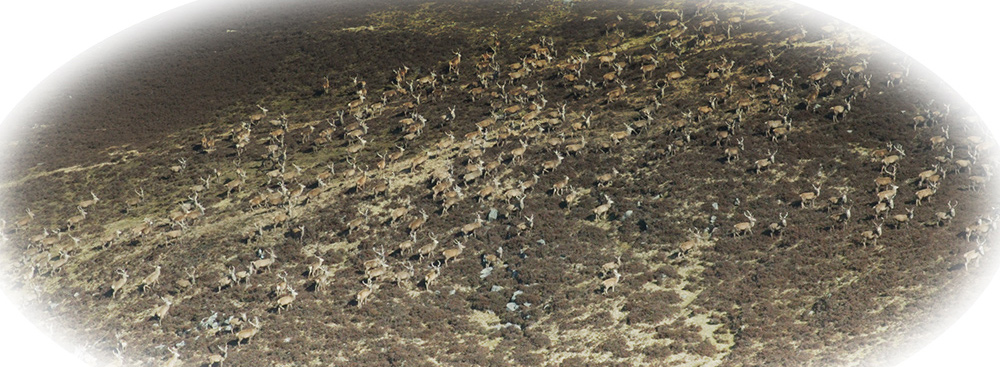Aim
The aim of this guide is to:
- Summarise the benefits arising from the preparation and implementation of a Deer Management Plan;
- Outline the essential elements to be included in a Deer Management Plan.

Why plan for deer management?
A Deer Management Plan (DMP) provides a practical and effective framework within which deer managers can first acknowledge and then attempt to balance the differing uses demanded from an area of land. Plans provide a basis for collecting and analysing necessary information which is then used to formulate management decisions.
Planning and good communication between all involved in deer management avoids misunderstandings by ensuring transparency of:
- Management objectives;
- Methods of achieving objectives;
- Monitoring and recording achievements;
- Ongoing reassessment of actions.
The process of developing the plan is in itself of immense value. The process will encourage dialogue between land managers and highlight the range of expectations that land managers have. It should therefore enable better collaboration and further understanding of the management challenges.
Who should be involved?
- Ensure contributions are received both from the landowner and all of the individuals who deliver the actions identified. This should include both professional and recreational deer managers.
- Take account of the views of those not directly involved with the preparation and delivery of the plans. Consulting the wider community on the plan may identify legitimate constraints but will also provide an opportunity to promote the work of the deer manager.
Setting the boundaries
The size of area and the number of landholdings to be included will vary depending on the objectives of the plan. The differing scales of plans can be categorised as:
- Strategic DMP for very large areas (e.g. a National Park) that applies similar objectives across disparate land holdings;
- The Deer Management Group DMP;
- Individual land ownership DMP;
- A DMP that outlines a single approach for a single land use e.g. in connection with a forestry scheme.
What should be in a DMP?
- Only use information that is relevant and useful (don’t pad it out but remember that some DMP’s are intended for other readers).
The diagram below outlines the planning process and can be used as an outline proforma. A more detailed pro-forma is available in ‘Collaborative Deer Management, Guidelines for a Deer Management Plan’ (1999) [SNH publication]1.
Remember to include only those headings that are useful to you, and focus on objectives.
- It is useful to present a simple population model that starts with current numbers and applies annual estimates of culls and recruitment to show how numbers will be modified to achieve objectives*;
- It is essential to link the population model to habitat objectives to ensure sustainable management.
1 The Plan
- Introduction
- Background information
- General policy statement
- Plan summary
 go to 2
go to 2
2 Audit
- Ownerships/ responsibilities
- Objectives of neighbours
- Habitat information
- Habitat impacts
- Woodland /forest design
- Deer information
- Biodiversity priorities
- Designations
- Boundary and access issues
- Economics
- Social information
- Infrastructure/equipment
 go to 3
go to 3
3 Setting Objectives
- Analysis of audit
- Ideal objectives
- Constraints and limiting factors
- Desired and achievable objectives
 go to 4
go to 4
4 Setting Targets
- Deer populations
- Deer culls
- Habitat impacts
- Other deer impacts
- Economics
 go to 5
go to 5
5 Select methods
- Culling
- Woodland/habitat design and ride maintenance
- Protection (fencing etc)
- Crop selection
- Collaboration across boundaries
 go to 6
go to 6
6 Actions
- Who will take the action
- When
- Where
- Over what time period
 go to 7
go to 7
7 Monitoring
- Deer populations
- Deer culls
- Deer welfare
- Habitat impacts
- Other deer impacts
- Economic
- Social
 go to 8
go to 8
8 Review
- Annual update
- Annual revision
- Preparation of revised plan
- Major review after 5 years
